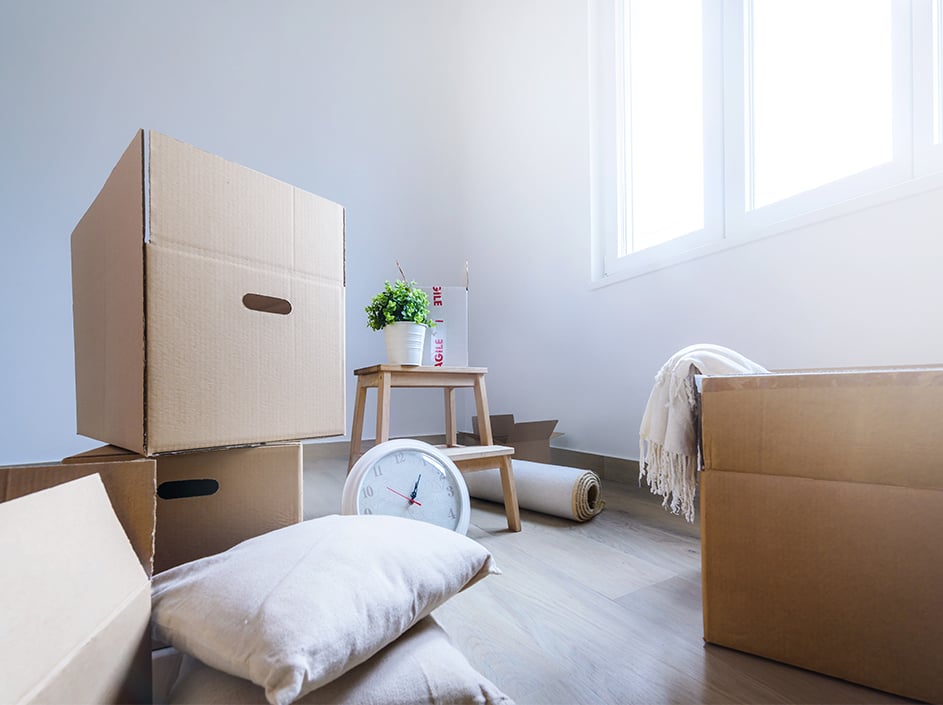Do you choose to buy with or without inventory?
When buying a house in Spain, you are usually given the choice of whether you want to buy the property with or without the existing inventory and whether this is included in the sale price or whether you will pay for it separately. After all, most properties on the Spanish Coasts are second or holiday homes and when these are sold, in many cases the sellers have little to no interest in moving the furniture to their own country (where they usually have their usual and fully furnished home). The different options have their pros and cons that you need to consider. In this article we mention some points to consider before making a decision about this.

First of all, you need to decide for yourself what you want. Buying a house without inventory offers some advantages, such as flexibility in choosing furniture and decorations that suit your taste, as well as room for negotiating the price. Moreover, it can result in less administrative hassle and lower capital gains tax on future sale. More on this later in this article.
On the other hand, there are also disadvantages to buying a house without inventory, such as the extra costs of buying furniture and appliances, as well as the time and effort required to furnish the house to your liking and finding suitable furniture stores.
Buying a house with inventory, on the other hand, can also offer convenience, as the house is ready for use and you don't have to worry about buying extra items. Moreover, it can be cost-effective in some cases.
However, there are also disadvantages associated with it, as you are limited to the included and sometimes somewhat worn inventory that is not entirely to your taste, possible overvaluation of the price by the seller, and the risk that the included inventory and/or white goods will break down in the short term, which can lead to additional costs in the short or long term. In addition, buying a house with inventory can result in higher capital gains tax on future sale, as the value of the property at purchase may be higher. More on this later.
Once you have made the choice for yourself, it is time to take a closer look at the tax aspect. Let's explain this a bit further. It is important to know that if you buy the property with furniture or movable goods which you include in the notarial deed, you pay 6% tax on the value of this instead of the 10% for the real estate. Also, the value of the furniture must be verifiable and in accordance with the amount stated in the deed (e.g. by means of a photo inventory and better yet, by providing invoices). The Spanish tax authorities carry out random checks, especially in sales where a high value is stated for the inventory, and in that case, the buyer must be able to prove that the paid value for the inventory is realistic. If not, a supplementary tax assessment may follow and if you are unlucky even a fine.
If you buy the property without inventory or agree that the purchase price includes inventory, then you pay a transfer tax of 10% on the total. This value is also taken as the starting point at the moment you sell the property in the future. The capital gains tax on sale will therefore be lower than when you buy the property with a separate payment for the inventory.
Finally, you can also choose to settle the movable goods with the selling party mutually. Then be aware that this is at your own risk and that both estate agents and lawyers/gestors do not want to get involved with this, as it is legally prohibited. After all, transfer tax must also be paid on movable goods, as you have been able to read above. The liability therefore lies entirely with yourself. The method of payment, the choice of the time of payment, the control of the furniture to be taken over and the completeness thereof, is therefore at the risk of the buyer.
Here is a fictitious example: You buy a property for 750,000€, including inventory. There are 3 options to opt for.
- If you buy the property for 700,000€ and the furniture for 50,000€ and you include this in the deed, then you pay: 10% over 700,000€ = 70,000€ (real estate) plus 6% over 50,000€ = 3,000€ (movable property), a total of 73,000€ transfer tax.
- If you buy the 'property including contents' for 750,000€ you pay: 10% on the total price of 750,000€ = 75,000€, i.e. 2,000€ more.
- If you decide to settle the furniture mutually with the seller at your own risk, then you pay 10% over 700,000€ = 70,000€, i.e. 5,000€ less.
If you sell the property again after 'x' years for the price of 1,000,000€ (real estate), then you pay transfer tax
- in case 1: 19% over 300,000€ (1,000,000€ - 700,000€) = 57,000€*
- in case 2: 19% over 250,000€ (1,000,000€ - 750,000€) = 47,500€
- in case 3: 19% over 300,000€ = 57,000€
*) Rate for non-residents at the time of writing this article.
NB In practice, when selling the property, 3% non-resident tax is withheld, which serves as an advance on the capital gains tax. If the property is sold without profit, this tax can be reclaimed.

.png?width=774&height=322&name=oficina%20%20kantoor%20IMMOFY%20(2).png)



